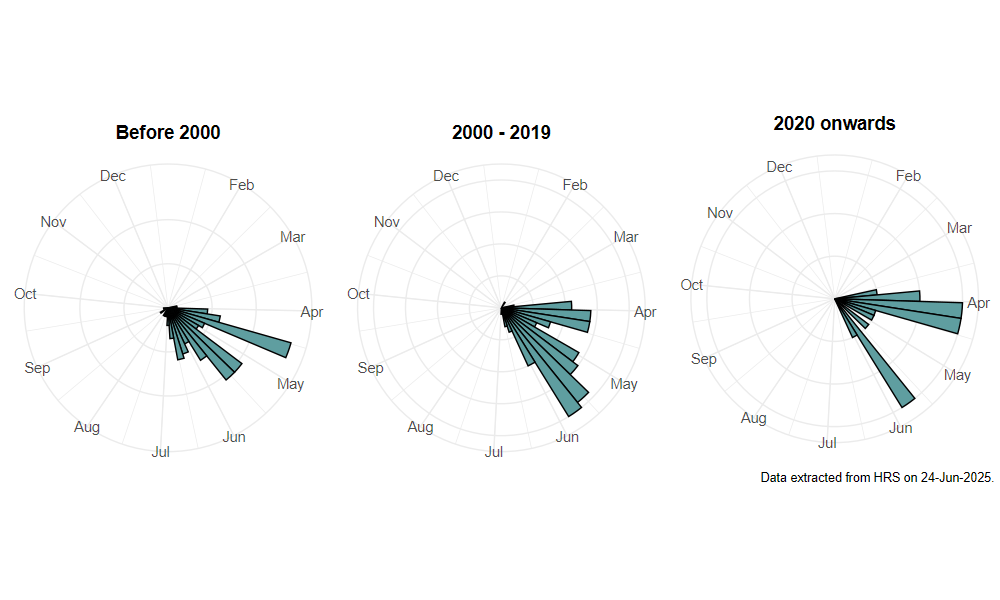Orthonevra geniculata (Meigen, 1830)
Identification
Identification difficulty = 3. ![]()
![]() according to Ball & Morris, 20241
according to Ball & Morris, 20241
Biology
The larva of this species remains unknown, but is presumed to be aquatic like others of the genus. Generally found in mildly acid, boggy areas in Scotland, but also in fens in East Anglia and on heathland with base influences in southern Britain. Adults are usually found close to water where they will visit flowers, but also settle on bare patches and dead vegetation in the sun.
Flight period
The following plots show the number of unique records per week excluding those reported to be of immature stages.

Status
Was listed as 'Notable' by Falk, 19912, but dropped from this status by Ball & Morris, 20143 who consider it LOWER RISK.
Distribution
A scarce species that is found most frequently in the southern uplands and the highlands of Scotland, but with scattered records in England and Wales. Within England the main centres of occurrence are in East Anglia and the heathlands of Surrey, Hampshire and Dorset.

Trends
The following plots show the Frescalo TFactor vs year and a map of the rescaled frequency (all records) for the species.
-
Ball, S., & Morris, R. (2024). Hoverflies of Britain and Ireland. WILDGuides (3rd ed.). Oxford: Princeton University Press. ↩
-
Falk, S. (1991). A review of the scarce and threatened flies of Great Britain. ( No. 39). Research and Survey in Nature Conservation (pp. 1–194). Peterborough: NCC. ↩
-
Ball, S., & Morris, R. (2014). A review of the scarce and threatened flies of Great Britain. Part 6: Syrphidae. ( No. 9). Species status (pp. 1–130). Peterborough: JNCC. ↩